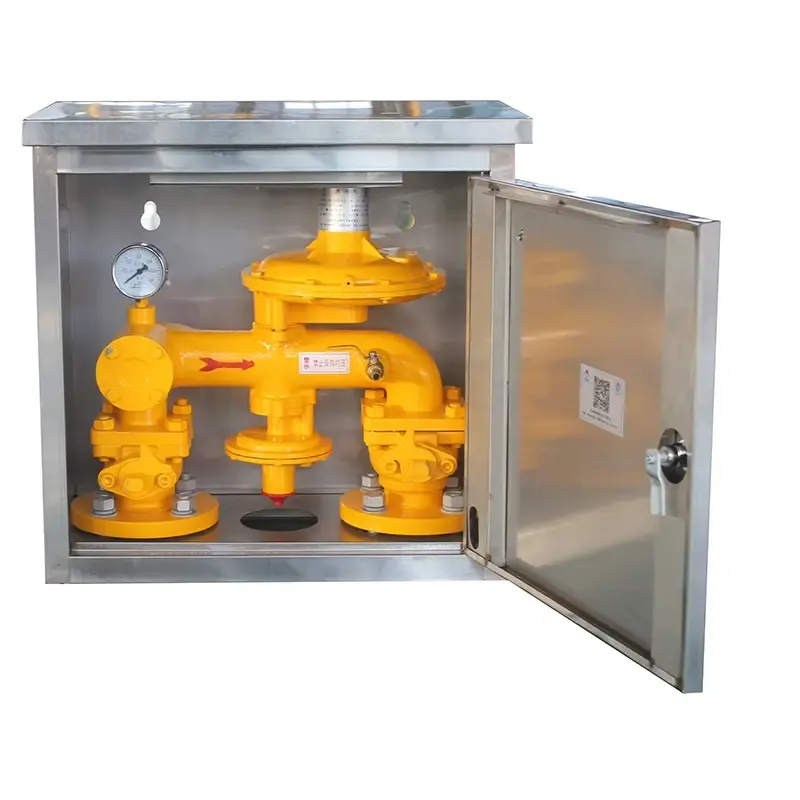
Aug . 19, 2024 12:12
Back to list
Pneumatic Control Valve Applications and Benefits in Modern Automation Systems
Pneumatic Control Valves An Overview
Pneumatic control valves are essential components in various industrial and manufacturing processes that utilize compressed air to control system operations. These valves play a critical role in regulating airflow, directing pneumatic power, and ensuring the safe and efficient functioning of machinery. As industries strive for automation and increased efficiency, understanding the functionality and applications of pneumatic control valves becomes paramount.
The Functionality of Pneumatic Control Valves
At their core, pneumatic control valves manage the flow of compressed air within a system. They operate based on the principle of controlling pressure and flow, which directly influences the performance of pneumatic actuators, such as cylinders and motors. By opening, closing, or partially obstructing the flow of air, these valves can effectively control speed, force, and direction of movement in hydraulic and pneumatic systems.
Pneumatic control valves can be categorized into several types, including solenoid valves, manually operated valves, and pilot-operated valves. Solenoid valves use electromagnetic coils to control valve positions, allowing for remote operation, while manually operated valves are controlled through levers or knobs, offering a straightforward approach for simpler systems. Pilot-operated valves, on the other hand, use a small pilot signal to control a larger flow, making them suitable for high-pressure applications.
Applications Across Industries
Pneumatic control valves are widely used in various sectors, including manufacturing, automotive, food processing, and packaging. In manufacturing facilities, these valves are crucial for controlling the operation of machines, ensuring that processes such as assembly, painting, and material handling are carried out efficiently. In the automotive industry, pneumatic valves regulate tools and equipment necessary for production lines, ensuring precision and safety in operations.
pneumatic control valve

Moreover, in the food processing sector, pneumatic control valves aid in the automation of bottling and packaging lines, ensuring that products are sealed and filled with accuracy. Their ability to maintain clean environments and handle various materials makes them ideal for these applications. Additionally, in the packaging industry, controlling air pressure with pneumatic valves ensures that packaging machines function seamlessly, leading to increased productivity and reduced downtime.
Advantages of Pneumatic Control Valves
The primary advantage of pneumatic control valves lies in their speed and reliability. Compared to hydraulic systems, pneumatic systems are generally lighter, faster, and easier to control. The quick actuation of these valves allows for rapid response times, which is particularly important in automation processes where delays can lead to increased costs and inefficiencies.
Pneumatic systems also tend to be more straightforward to maintain than their hydraulic counterparts. Compressed air is easier to source and manage, and the components of pneumatic systems typically have fewer wear indicators compared to hydraulic systems, which rely heavily on fluids that can leak and create maintenance challenges.
Conclusion
In summary, pneumatic control valves are indispensable for modern industrial operations, streamlining processes across various sectors by providing reliable control over compressed air. As industries continue to move towards increased automation to improve efficiency and output, understanding the functionality, applications, and benefits of pneumatic control valves will serve modern businesses well. By investing in high-quality pneumatic control systems, industries can enhance their operational capabilities, ensuring a competitive edge in an ever-evolving market.
Latest news
-
Safety Valve Spring-Loaded Design Overpressure ProtectionNewsJul.25,2025
-
Precision Voltage Regulator AC5 Accuracy Grade PerformanceNewsJul.25,2025
-
Natural Gas Pressure Regulating Skid Industrial Pipeline ApplicationsNewsJul.25,2025
-
Natural Gas Filter Stainless Steel Mesh Element DesignNewsJul.25,2025
-
Gas Pressure Regulator Valve Direct-Acting Spring-Loaded DesignNewsJul.25,2025
-
Decompression Equipment Multi-Stage Heat Exchange System DesignNewsJul.25,2025

